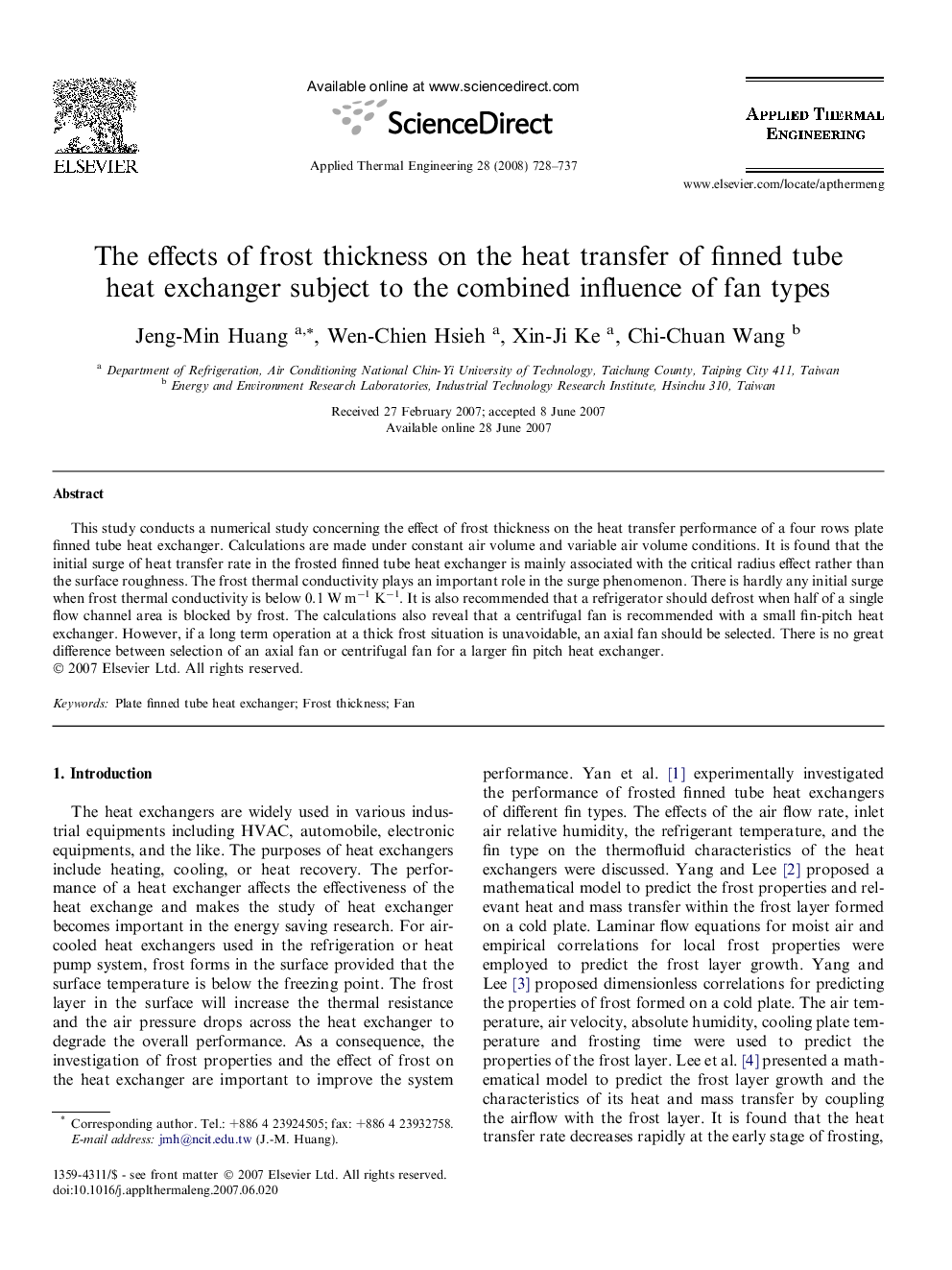| Article ID | Journal | Published Year | Pages | File Type |
|---|---|---|---|---|
| 649464 | Applied Thermal Engineering | 2008 | 10 Pages |
This study conducts a numerical study concerning the effect of frost thickness on the heat transfer performance of a four rows plate finned tube heat exchanger. Calculations are made under constant air volume and variable air volume conditions. It is found that the initial surge of heat transfer rate in the frosted finned tube heat exchanger is mainly associated with the critical radius effect rather than the surface roughness. The frost thermal conductivity plays an important role in the surge phenomenon. There is hardly any initial surge when frost thermal conductivity is below 0.1 W m−1 K−1. It is also recommended that a refrigerator should defrost when half of a single flow channel area is blocked by frost. The calculations also reveal that a centrifugal fan is recommended with a small fin-pitch heat exchanger. However, if a long term operation at a thick frost situation is unavoidable, an axial fan should be selected. There is no great difference between selection of an axial fan or centrifugal fan for a larger fin pitch heat exchanger.
